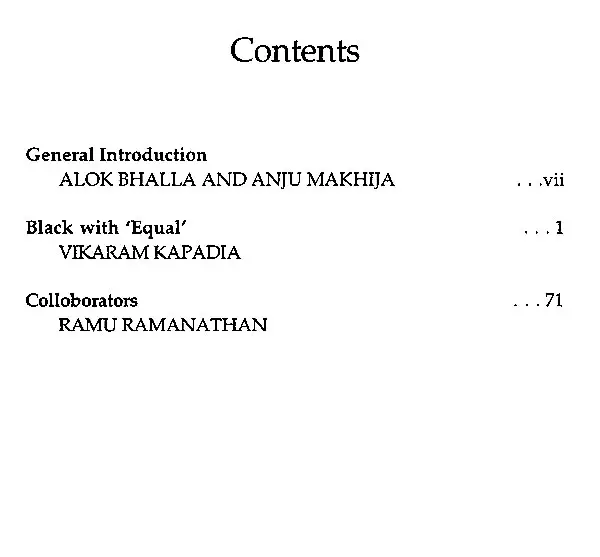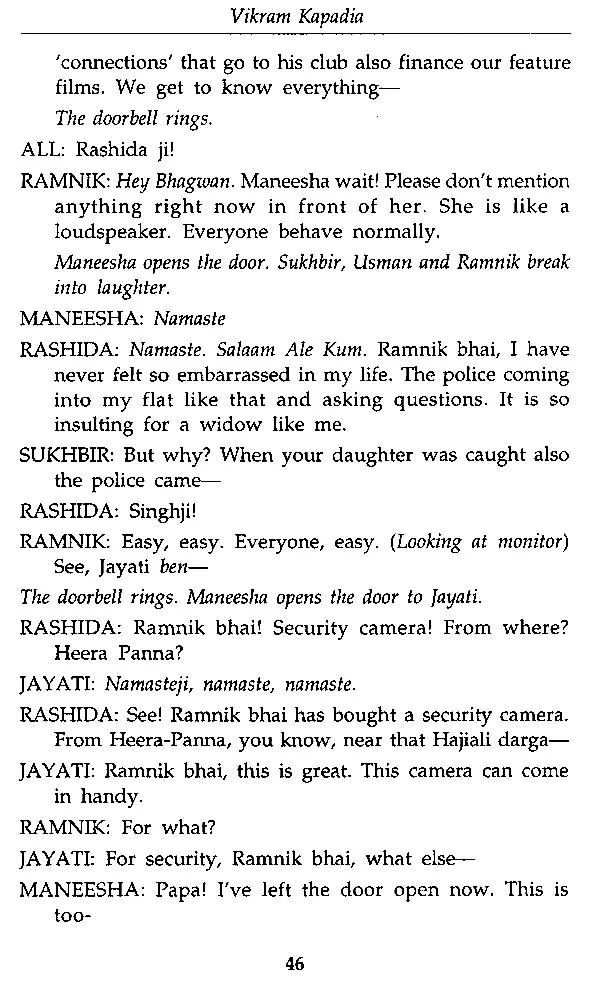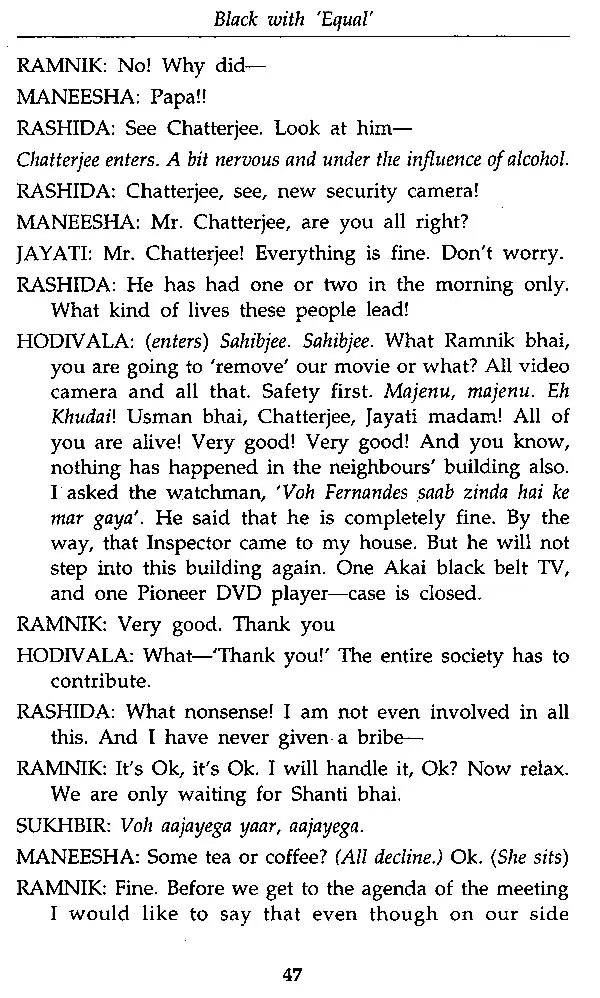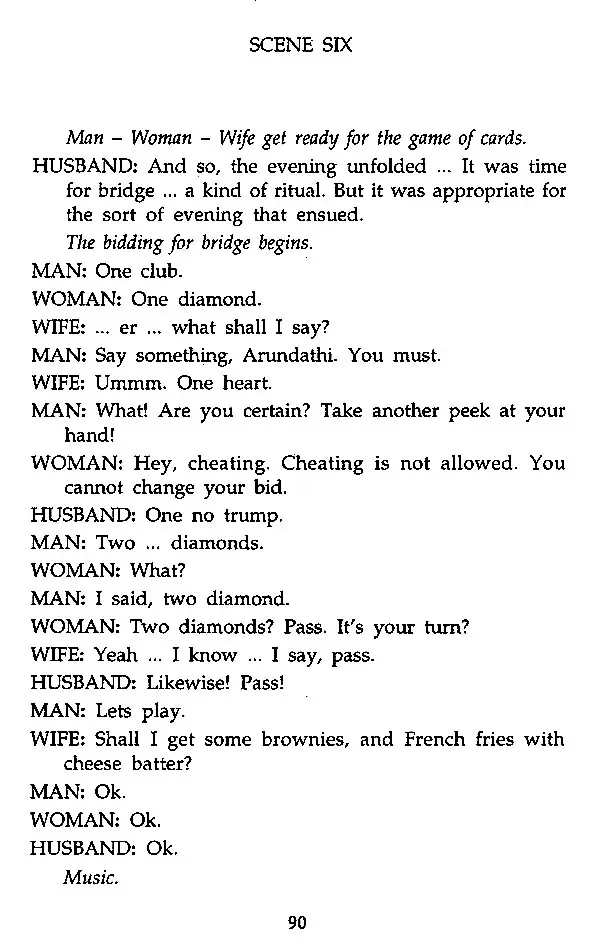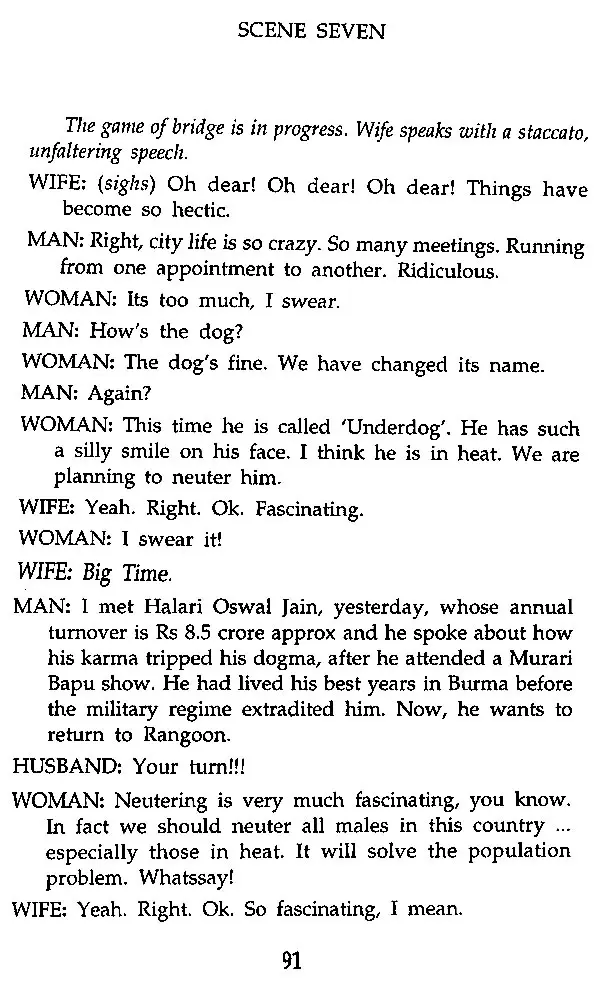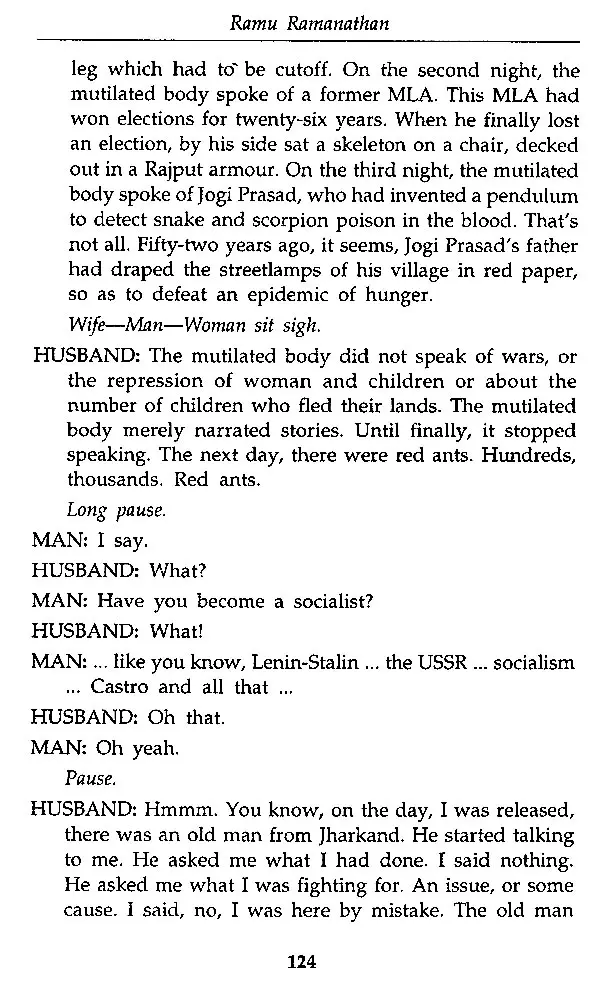
Black with 'Equal'
Book Specification
| Item Code: | UAM545 |
| Author: | Vikram Kapadia |
| Publisher: | SAHITYA AKADEMI, DELHI |
| Language: | English |
| Edition: | 2017 |
| ISBN: | 9788126024230 |
| Pages: | 139 |
| Cover: | PAPERBACK |
| Other Details | 8.50 X 5.50 inch |
| Weight | 200 gm |
Book Description
As editors of Sahitya Akademi's series of contemporary Indian plays in English, we are neither trying to invent a new genre nor reinstate an ancient theatrical tradition. We only want to acknowledge that Indian plays in English have been written, published and produced since at least the early 1920s and that they deserve serious critical attention. They have not been as visible, of course, as the plays in the regional languages, even though in the urban centres at least they have existed beside them. Along with their colleagues in Bengali, Marathi, Hindi, Gujarati, Malayalam or Manipuri, Indian playwrights writing in English have had their troubles with publishers, censor-boards, directors, theatre-hall owners, moneyed sponsors, unresponsive audiences, vanishing professional actors, etc. They too have had to puzzle over the form of their plays; ask if their modern relevance would be assured only if they adopt theatrical techniques which gave to Europe its modern theatre; and wonder if their contemporaniety would be granted only if they imitate post-modernist plays of Europe with their emphasis on cleverly choreographed actions without social or political reason. Some of them have, of course, succumbed to the charms of the meta-theatre's urge to transcend realist drama as a baggage too heavily burdened with the economics of mortality and poverty. Most of them have, however, been content to stay faithful to the elements of realist drama so that they can notice the minutiae of the ordinary world in which their characters have to make their existential being or forego their right to exist as citizens.
Indian playwrights in English have also had to ask themselves if their authenticity as participants in some. predetermined Indian tradition depends upon their ability to evoke the theories of feeling and acting laid down by Bharata in the Natya Shastra, or worry if their 'post-colonial' credentials would be acknowledged only when their themes are recognised as 'allegories of the nation state' as demanded by the latest literary critics of the Indian 'diaspora' in the West. Sometimes, like a few of the playwrights in working in the other Indian languages, they seem to give into the demands of the 'nativist' ideologues who insist that there is a single way of determining 'Indianness' and that it lies in the remote glories of our past. As a result they write verse plays either about our saint-poets or mythicised historical figures so as not to appear 'alien' to the administrators of Indian culture. The sutradhar, the storyteller, of the older classical and folk theatre is, after all, an attractive figure for he lives in the heart of a myth enraptured culture and has the ancestral right to invite the audiences into a world of such enchantment that human characters in it can clap their hands and sing their way up to paradise and gods can descend to earth in a shower of marigolds. But there are many other Indian playwrights in English who dismiss the aesthetic, cultural and political demands of the classicists and the folklorists, and believe that a playwright's primary responsibility is to the times in which he or she lives, and that the form or style, theme or ideology emerge from the confrontation between the writer and the obdurate world which surrounds him or her. Thus, they write about Gandhi or the strikes by mill workers if the politics of the nation is their concern, or speak nostalgically about those classes which have failed to survive economic transformations but were once the masters of commerce, deal with the genocidal potential of caste and religious conflicts, or analyse the relation between sexual violence and forms of coercive social relationships which now seem to increasingly define our new urban spaces, or try to understand why fear has become so pervasive a part of our daily lives.

